The total solar eclipse is today. Here’s what to expect in Ohio
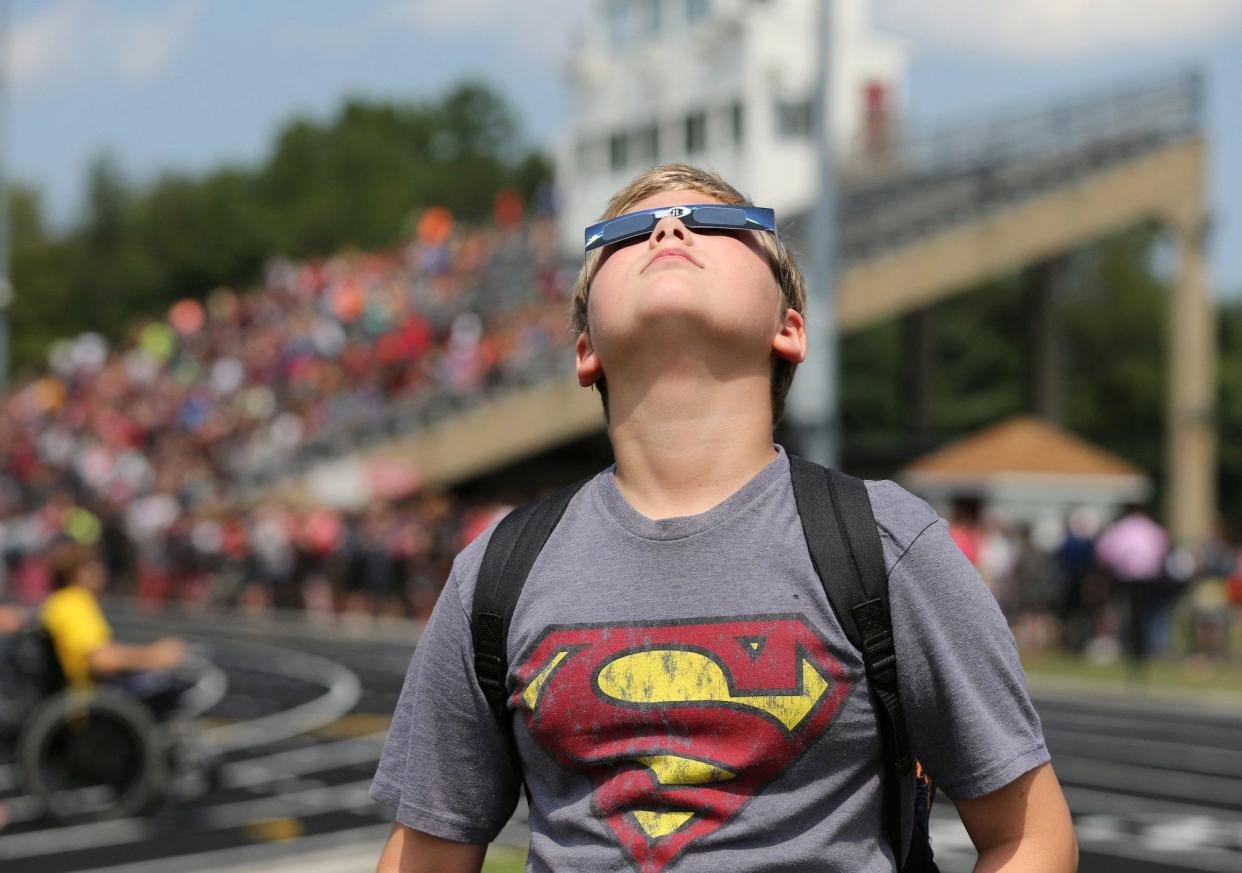
The long-awaited day is almost here.
A total solar eclipse in Ohio hasn't happened since 1806, and it won't happen again until 2099.
One thing is for sure: Clouds or not, the sun is going to disappear behind the moon for about three minutes across northern Ohio.
And there will be total darkness.
As of now, the weather looks promising with partly sunny skies in the forecast.
Solar Eclipse 2024: Darkness falling over Northeast Ohio on April 8 | Live updates
However, it remains to be seen whether we will be standing shoulder to shoulder looking up at the celestial spectacle and then sitting in bumper-to-bumper traffic for hours after the moment of totality.
This is a comprehensive list of everything you need to know for the historic day.
What's the eclipse day weather forecast for Akron and Canton?
The weather in Northeast Ohio can be fickle and change by the minute, especially in early April.
But the weekend forecast leading up to the big day looks great with mostly sunny skies and highs climbing to the 50s by Sunday.
The eclipse day forecast is a bit cloudy.
The National Weather Service forecast is calling for partly cloudy skies with a 30% chance of showers.
But weather experts say the forecast can shift, and even clouds − particularly high ones − don't necessarily mean the sun will be totally obscured at the time of the eclipse.
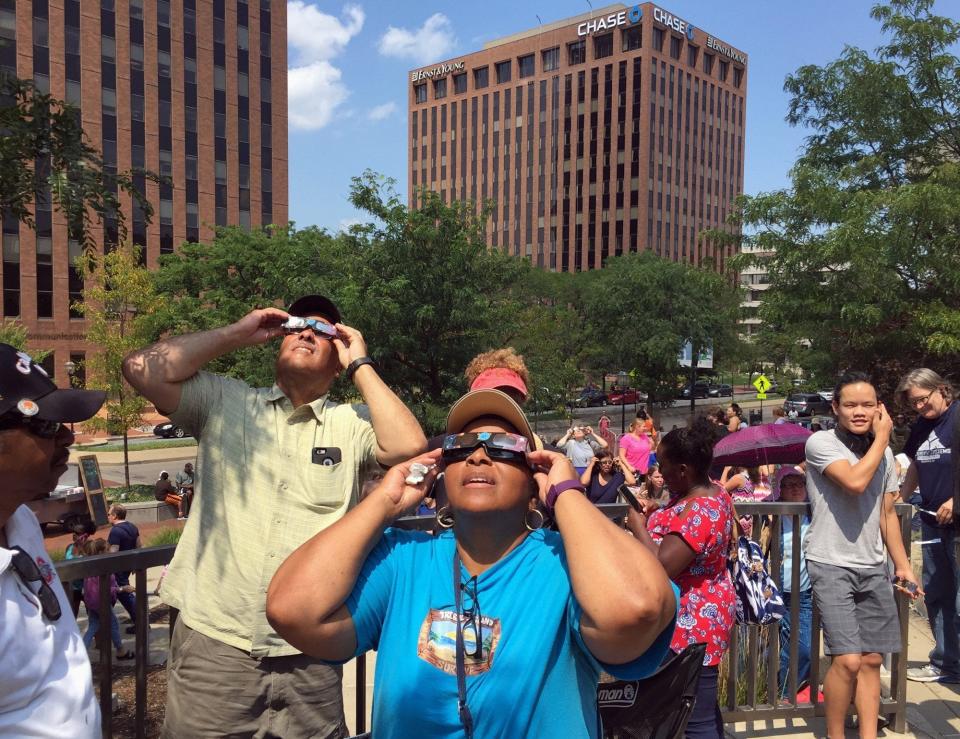
Will there be traffic jams in the path of totality?
This is truly a once-in-a-lifetime event for northern Ohio, and officials say it is such a momentous event that they expect tens of thousands from nearby and far away to come be a part of history.
Officials are predicting heavy traffic Monday, particularly following the eclipse, when everyone heads home at once.
Summit and Stark County officials are advising residents to stay home and avoid roads if possible. That means planning ahead to get gas or groceries before the day of the eclipse.
Many school districts have already cancelled or modified the school day on April 8.
If you are travelling, make sure you have a plan and pack the essentials, said Suzie Dills, planetarium director at McKinley Museum.
"Make sure you have snacks, make sure you have water, make sure you dress for the weather because there's a possibility that you might be sitting in traffic for a while," she said.
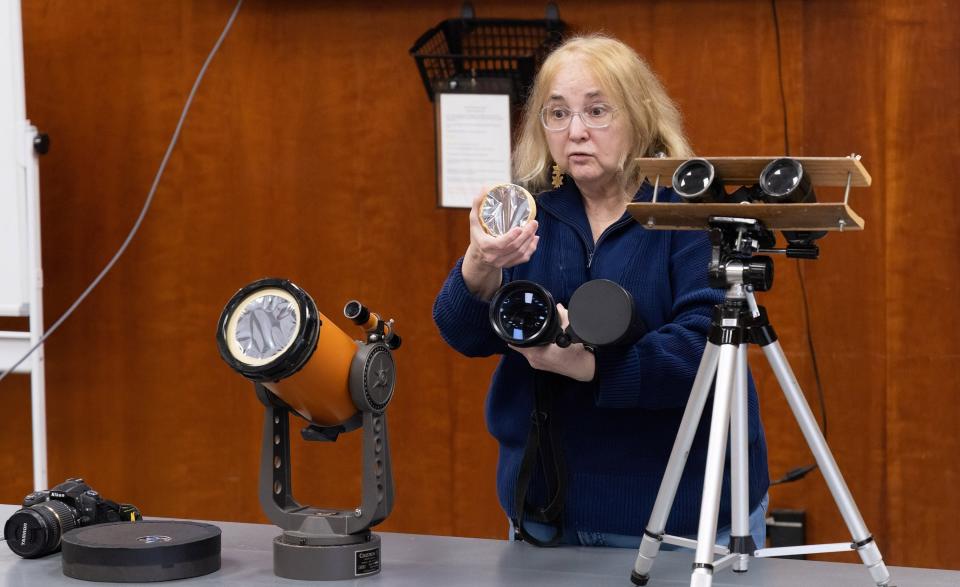
How can I safely watch the solar eclipse?
To view the partial stages of the solar eclipse, you will need to use specialized viewers.
It is never safe to look directly at the sun without eye protection. Doing so could cause temporary or permanent vision loss.
It is safe to view the sun through ISO 12312-2 certified solar filters. See a list of certified solar filters and eclipse glasses on the American Astronomical Society's website.
More: Watching the total solar eclipse? Here's how to do it safely
If you do not have eclipse glasses, you can watch the partial eclipse indirectly as a projection.
Poke a pinhole through a piece of cardboard. With the sun at your back, project the sun's light through the pinhole onto a sheet of white paper.
This effect can also be replicated by using the holes in a colander or slotted spoon to project the sun onto the ground or a wall.
During totality, when the moon completely covers the surface of the sun, it is safe to look without a solar filter.
Can I take a photo of the solar eclipse?
Just like viewing with your eyes, if you plan to take pictures of the solar eclipse during the partial phases, you will need a solar filter attached to the sun side of the lens.
A solar filter for a camera is essentially the same as what is used for eclipse glasses. Ensure the filter covers the entire lens of the camera to avoid any damage.
Never look through a camera at the sun without a solar filter on the lens. The camera can magnify the sun's rays into your eyes and cause irreversible damage, even if you are wearing eclipse glasses.
What happens if it is cloudy during the eclipse?
The total eclipse will happen sun, rain or even snow.
Experts say a cloudy sky will be a bummer, but it will still not be a typical day.
Cloud cover will automatically make it a bit darker, and experts say the transition into total darkness will seem more sudden, occurring in the final minute or so. And observers may miss the subtle changes as the sun slowly disappears and day becomes night.
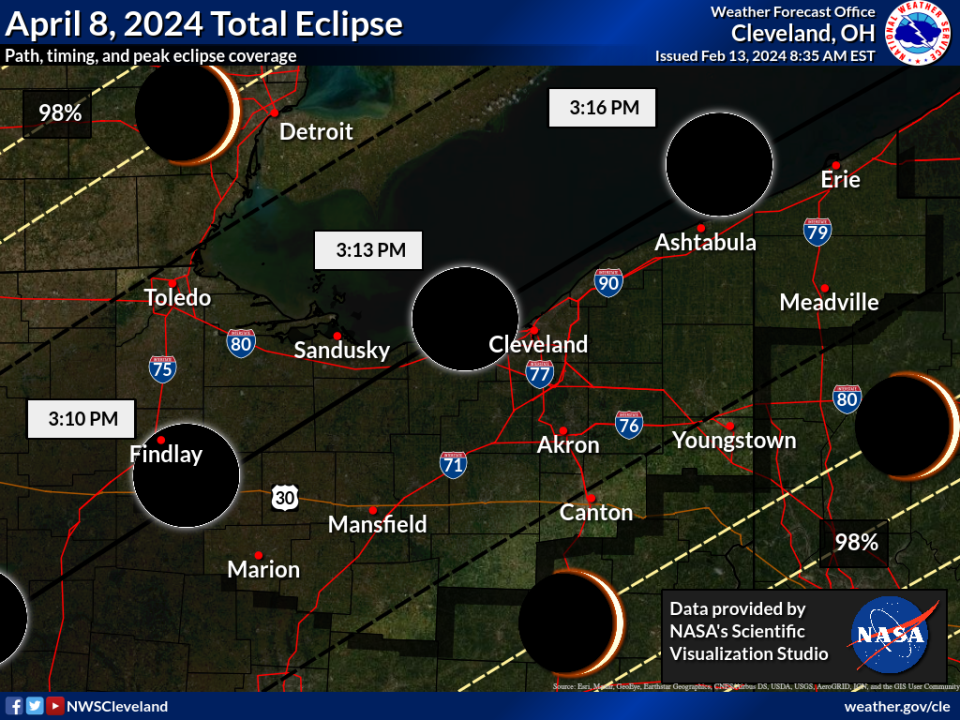
What time is the eclipse in Akron and Canton?
The eclipse will start in Texas and then make its way across the country, passing over Oklahoma, Arkansas, Missouri, Illinois, Kentucky and Indiana before arriving in Ohio.
For Akron and Canton, the eclipse will begin at 1:59 p.m. as the moon slowly casts its shadow across the sun.
Totality —or complete darkness — in Akron will be at 3:15 p.m. and last two minutes and 49 seconds.
It will slowly get brighter outside, and the eclipse will end at 4:29 p.m.
Findlay will experience totality between 3:10 p.m. and 3:15 p.m.
For Cleveland, it will be totally dark between 3:13 p.m. 3:17 p.m.
What can I expect when the solar eclipse happens?
The eclipse will not happen in the blink of an eye.
Things will progress very, very slowly. But it will seem like nightfall once totality arrives.
The moments leading up to totality won't be like a typical sunset. It will get darker from above instead of from the west like it does when the sun sets at night.
At the peak of totality, it will be as dark as night. Street lights will come on, and birds will likely retreat to their nests.
The temperature is expected to drop by as many as 15 degrees.
And then it will all happen in reverse, getting progressively brighter as more and more of the sun becomes exposed.
What to watch for: Baily's Beads and Diamond Ring
Baily's Beads is a phenomenon that happens seconds before and after totality, when a sliver of sunlight peaks out from behind the moon's cover.
That sliver of sunlight will be broken up by the mountains and valleys of the moon's surface, creating what looks like a string of beads.
"That happens fast. If you're not watching, you won't see it," said Robin Gill, astronomy education specialist at the Wilderness Center.
Similarly, the Diamond Ring effect happens immediately before and after totality. It refers to the moment when the sun is almost fully covered by the moon and just one spot of sunlight peeks through.
The bright sunlight in one spot combined with the ring of the sun's corona creates the appearance of a diamond ring.
The corona is the sun's outermost atmosphere. It is normally obstructed by the sun's bright surface but will be visible during the solar eclipse.
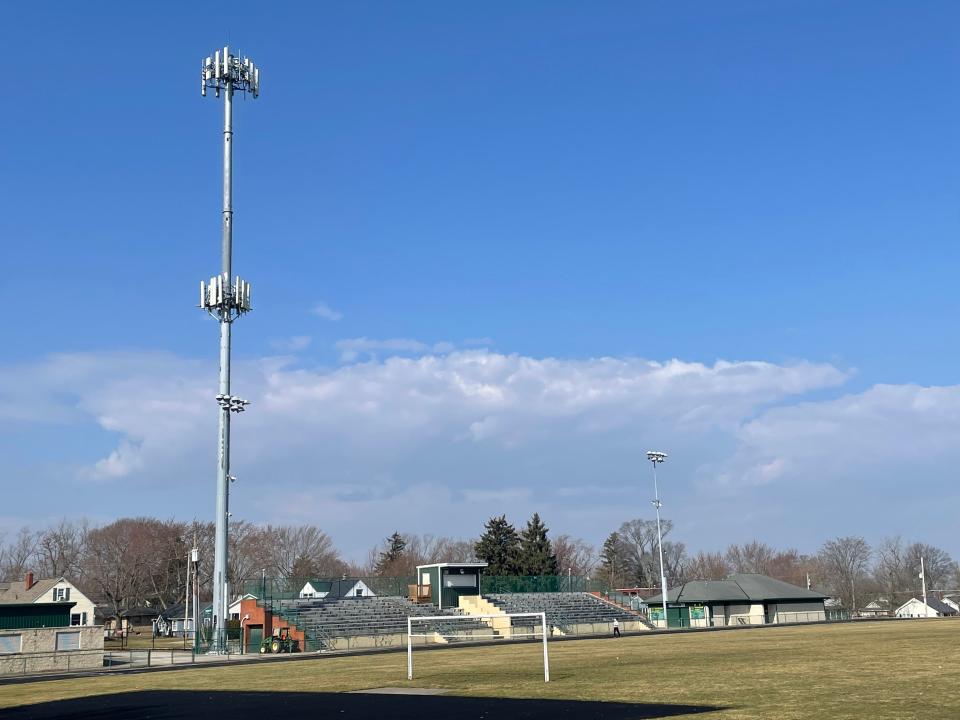
Will my cell phone work on the day of the eclipse?
Area emergency management officials along with the state are advising residents to prepare for the potential that cellphones might not work before or after the eclipse because of the crush of visitors.
Verizon says it and other providers have been preparing for months.
But some say a sudden surge of cellphone users in a community could overwhelm the network capabilities and result in the dreaded "no service" or "SOS" words on screens.
Visitors and residents alike are urged to download maps that can be stored on their phones or even print out maps ahead of time so they do not have to rely on real-time navigation.
Another thing you can do to help ensure your cellphone will work is switch over to Wi-Fi mode if possible and publicly available.
Another option is to pick up a satellite phone that does not rely on the cellular network.
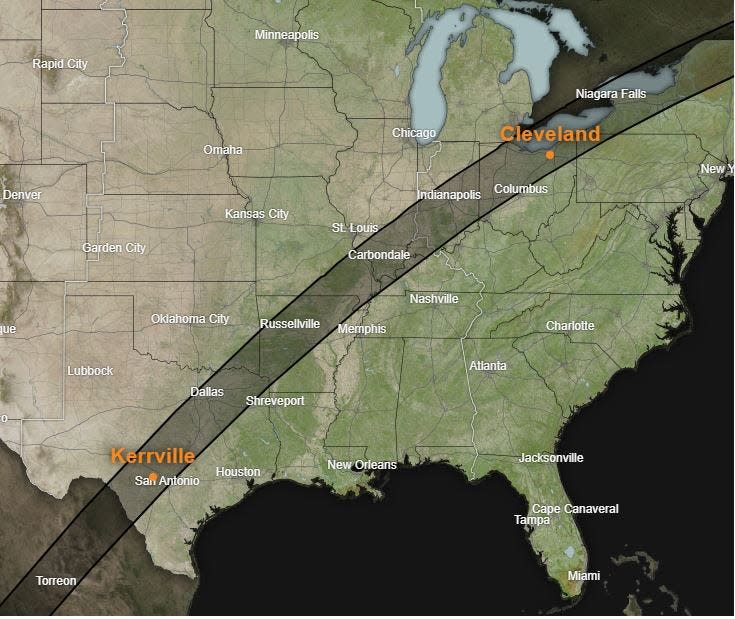
Where can I watch the eclipse?
If you live within the path of the total eclipse, all you have to do is venture out into the backyard and look up − as long as you have the special glasses.
Government and public health officials are urging Northeast Ohio residents to stay home or within walking distance of home to view the eclipse and avoid anticipated traffic backups.
Be advised some communities like Akron plan to restrict access to some public parks and require tickets during the eclipse.
Even the Cuyahoga Valley National Park has joined the chorus asking local residents to stay home during the eclipse.
The national park will be open to visitors during the eclipse, but some parking lots will be closed while others are expected to fill up quickly once they open at 7 a.m. on Monday.
What if I'm hosting an eclipse party?
Public health officials say those hosting parties should be mindful of their guests.
Like any gathering at a home, they say hosts should make sure their guests drink in moderation.
There is a fear that should an emergency arise, it might take more time for help to arrive because of clogged roads and potentially spotty cell reception should the cellular networks become overwhelmed.
More: Solar eclipse: Here's which colors to wear — and avoid — when the eclipse arrives in Ohio
Health officials also say you should be mindful where you park cars and avoid parking over septic systems, as the weight of the vehicles could cause damage.
There are also regulations in place limiting the number of overnight tents permitted on a residential property.
Health officials are urging those hosting parties to ask guests to hang around well after the eclipse is over to spread out the number of vehicles on the roads.
What's closed on the day of the eclipse?
Monday will be a bit like a holiday in Northeast Ohio.
Most public schools are off or in remote-learning mode.
Many government offices will be closed for the day or operating under limited hours and staff.
Some businesses may also be closed or plan to close early or for the hour around the total eclipse.
The best advice will be to call ahead or check online to see whether your destination is open on Monday.
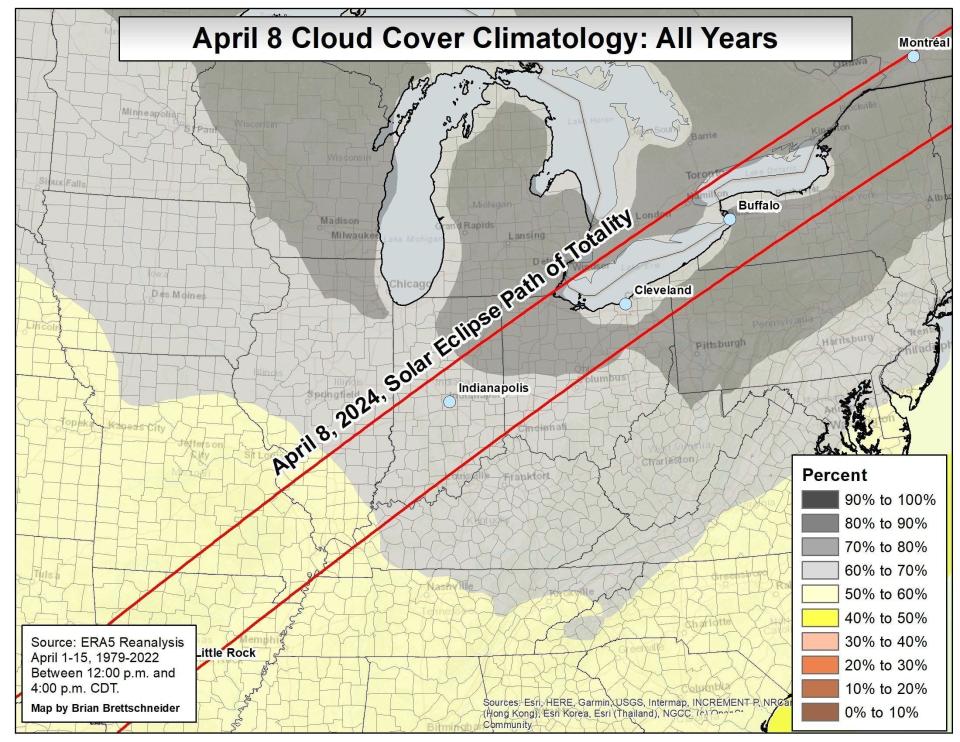
What does history tell us the weather will be like on April 8?
Weather data for Akron and Canton dates as far back as 1847.
As for overall precipitation, an average of 0.13 inches have fallen on April 8. The most precipitation − 1.43 inches − was recorded back in 1914. And last year was among those where no precipitation fell on the date.
Snowfall records date back to 1948 and show we average just 0.2 inches for the date, with the snowiest April 8 ever occurring in 1985, when 2.7 inches of snow fell.
The average high in Greater Akron on April 8 is 59 degrees, with the warmest ever coming in 2021 when it hit 83 degrees. The coldest was in 1971, when the temperature fell to 14 degrees.
Craig Webb can be reached at cwebb@thebeaconjournal.com. Reach Grace Springer at 330-580-8364 or gspringer@gannett.com.
This article originally appeared on The Repository: Everything you need to know for the total solar eclipse in Ohio

